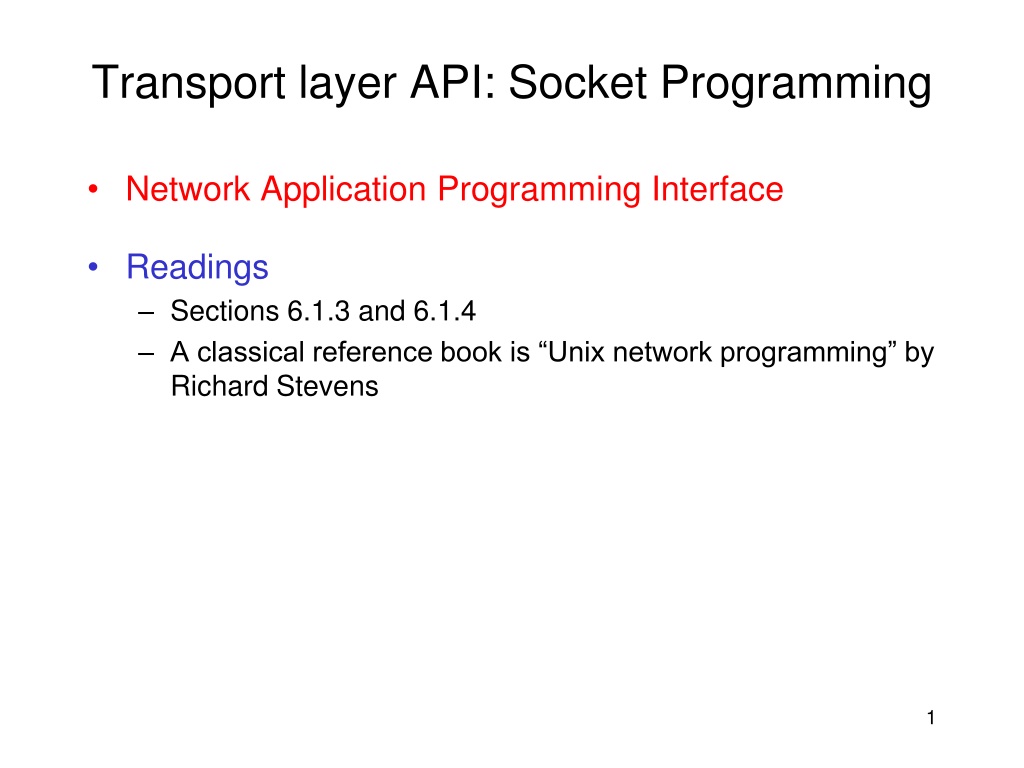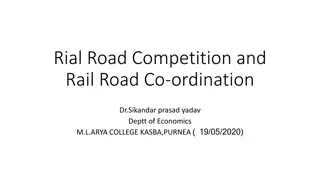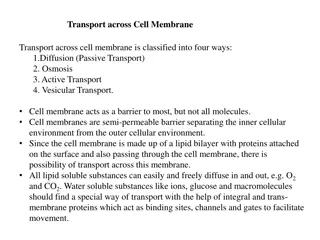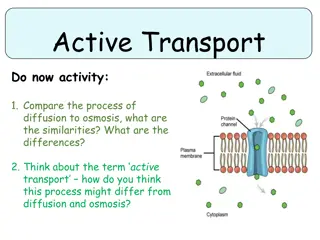
Socket Programming and Unix Network References
Explore the layers of TCP/IP networking, BSD socket API, basic TCP functions, and the conceptual view of network endpoints with references to Unix network programming by Richard Stevens. Learn about setting up TCP connections, sending/receiving packets, and understanding socket communication protocols.
Download Presentation

Please find below an Image/Link to download the presentation.
The content on the website is provided AS IS for your information and personal use only. It may not be sold, licensed, or shared on other websites without obtaining consent from the author. If you encounter any issues during the download, it is possible that the publisher has removed the file from their server.
You are allowed to download the files provided on this website for personal or commercial use, subject to the condition that they are used lawfully. All files are the property of their respective owners.
The content on the website is provided AS IS for your information and personal use only. It may not be sold, licensed, or shared on other websites without obtaining consent from the author.
E N D
Presentation Transcript
Transport layer API: Socket Programming Network Application Programming Interface Readings Sections 6.1.3 and 6.1.4 A classical reference book is Unix network programming by Richard Stevens 1
Networking with TCP/IP Layered architecture Programs that you and I write TCP/UDP API (TCP_send/recv,etc) Application Transport(TCP/UDP) Network(IP) Link (e.g. Ethernet) OS software realizing TCP/UDP functionality IP API (IP_send/recv,etc) OS software realizing IP functionality Link API (Ethernet_send/recv,etc) OS software, NIC firmware, NIC hardware realizing the link function
Networking with TCP/IP Programs that you and I can write TCP/UDP API (TCP_send/recv,etc) OS software realizing TCP/UDP functionality IP API (IP_send/recv,etc) Socket API OS software realizing IP functionality Link API (Ethernet_send/recv,etc) OS software, NIC firmware, NIC hardware realizing the link function
BSD Socket API Introduced in 1981 BSD 4.1 UNIX Function call interface to network services system and library calls Through the API, one can setup TCP connection, send and receive TCP/UDP, IP, and Ethernet packets. Sending IP and Ethernet packets require root privilege. Network application programming primitives Reference Unix Network Programming by Richard Stevens Connects two sockets on separate hosts Sockets are owned by processes Processes communicate through sockets 4
BSD Sockets and Internet Protocols API: BSD Sockets Socket: source/destination IP addresses + port numbers + protocol Transport: TCP/UDP TCP: in-order, reliable, byte-stream data transfer Connection-oriented UDP: unreliable data transfer No connection set-up Network: IP Connectionless, no guarantees 5
Basic TCP API socket bind listen connect accept read write close
Sockets, the network end-point Conceptual View 7
Connection-Oriented Application (TCP application) 1. Server gets ready to service clients Creates a socket Binds a local address to the socket Server s address should be made known to clients Listen (make the socket passive) Client contacts the server Creates a socket Connects to the server Client has to supply the address of the server Server accepts connection requests from clients Further communication is specific to application 2. 3. 4. 8
Creating a socket int socket(int family, int type, int protocol) family: symbolic name for protocol family AF_INET, AF_UNIX type: symbolic name for type of service SOCK_STREAM, SOCK_DGRAM, SOCK_RAW protocol: further info in case of raw sockets typically set to 0 Returns socket descriptor 10
Binding Socket with an Address int bind(int sd, struct sockaddr *addr, socklen_t len) sd: socket descriptor returned by socket() addr: pointer to sockaddr structure containing local address to be bound to socket len: length of address structure Returns 0 if success, -1 otherwise 11
Specifying Socket Address struct sockaddr_in { short u_short struct in_addr char }; sin_family; /* set to AF_INET */ sin_port; /* 16 bit port number */ sin_addr; /* 32 bit host address */ sin_zero[8]; /* not used */ struct in_addr { u_long }; s_addr; /* 32 bit host address */ 12
Bind Example #include <sys/types.h> #include <sys/socket.h> int sd; struct sockaddr_in ma; sd = socket(AF_INET, SOCK_STREAM, 0); ma.sin_family = AF_INET; ma.sin_port = htons(5100); ma.sin_addr.s_addr = htonl(INADDR_ANY); if (bind(sd, (struct sockaddr *) &ma, sizeof(ma)) != -1) Notice that htons and htonl function? Why integer numbers may be represented differently in different machines? How can the sender and the receiver agree on a format? Define a common network format! 13
Listen Convert a socket into a passive socket #include <sys/socket.h> int listen(int sockfd, int backlog) Backlog: number of pending connections that the kernel should queue for the socket. The socket will refuse connections if the queue is full. Not well defined. E.g: backlog= 5: AIX 4.2(8), Linux2.0.27(5), SunOS4.1.4(8), Solaris2.5.1(6).
Client: Connecting to Server int connect(int sd,struct sockaddr *addr,socklen_t len) sd: socket descriptor returned by socket() addr: pointer to sockaddr structure containing server s address (IP address and port) len: length of address structure Returns 0 if success, -1 otherwise 15
Client: Connect Example int sd; struct sockaddr_in sa; sd = socket(AF_INET, SOCK_STREAM, 0); sa.sin_family = AF_INET; sa.sin_port = htons(5100); inet_aton( 128.186.120.34 , (struct in_addr *) &sa.sin_addr.s_addr); if (connect(sd, (struct sockaddr *) &sa, sizeof(sa)) != -1) 16
Server: Connection Acceptance by Server int accept(int sd, struct sockaddr *from, socklen_t *len) sd: socket descriptor returned by socket() from: pointer to sockaddr structure which gets filled with client s address len: length of address structure Blocks until connection requested or error returns a new socket descriptor on success 17
Connection-oriented Server int sd, cd; struct sockaddr_in ma, ca; socklen_t calen; sd = socket(AF_INET, SOCK_STREAM, 0); ma.sin_family = AF_INET; ma.sin_port = htons(5100); ma.sin_addr.s_addr = htonl(INADDR_ANY); bind(sd, (struct sockaddr *) &ma, sizeof(ma)); listen(sd, 5); calen = sizeof(ca); cd = accept(sd, (struct sockaddr *) &ca, &calen); read and write to client treating cd as file descriptor 18
Examples See example1.c and example2.c for a TCP echo server and client. 19
More on Socket Descriptor A 5-tuple associated with a socket {protocol, local IP address, local port, remote IP address, remote port} socket() fills the protocol component local IP address/port filled by bind() remote IP address/port by accept() in case of server in case of client both local and remote by connect() Complete socket is like a file descriptor Both send() and recv() through same socket write send, read recv, like writing and reading a file. accept() returns a new complete socket Original one can be used to accept more connections 20
Streams and Datagrams Connection-oriented reliable byte stream SOCK_STREAM based on TCP No message boundaries Multiple write() may be consumed by one read() Connectionless unreliable datagram SOCK_DGRAM based on UDP Message boundaries are preserved Each sendto() corresponds to one recvfrom() 21
Basic UDP service interface: Socket, bind, sendto, recvfrom, close See example3.c/example4.c for a UDP echo client and server UDP server UDP client TCP server TCP client socket socket bind sendto recvfrom recvfrom sendto close socket socket Bind connect Listen Accept read/write close Read/write close






















